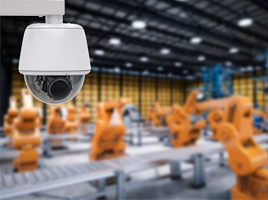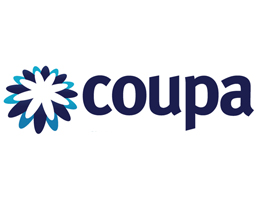
Mining company Roy Hill seized the opportunity to plan the end-to-end business operations for its new iron ore mining project from scratch by focusing on digitalization and the Internet of Things. The concept proved successful and is continuously optimized.

An expansive control room, scores of employees busy at their desks, and huge monitors on the walls: Welcome to the heart of Roy Hill, an Australian mining company headquartered in Perth. This is where Roy Hill oversees its iron ore mine in Western Australia – some 800 miles away. The graphics on the screens in the Remote Operations Centre (ROC) deliver valuable, real-time parameter data to the demand chain and supply chain teams based in the ROC, thus enabling the staff there to plan, schedule and execute the entire mine operation from start to finish.
End-to-End Integration Thanks to SAP ERP
Before the greenfield open cut mine shipped its first load of ore at the end of 2015, Roy Hill had the opportunity of being able to develop a comprehensive end-to-end concept right from the start and align all processes – covering everything from operations in the mine near Newman to transportation along the 344-mile stretch of rail to the port operations in Port Hedland.
One fundamental element of this concept is the control center in Perth, the other is the seamless software infrastructure.
“When we designed the applications infrastructure, we were able to do this having an end-to-end integration in mind,” explains Jane Raffaele, Manager IT Program at Roy Hill. “We had to select a core set of applications. So SAP is one of those foundational pieces of software, its integrated nature helps us tie everything together and make sure that the data is available where you need it for the process.”
Roy Hill currently uses several modules of SAP ERP, such us for finance, payroll, and materials management, as well as SAP SuccessFactors solutions for HR. It also plans to introduce further SAP solutions and transition to SAP S/4HANA in the near future.
Different IoT Scenarios for Greater Efficiency and Security
A third team based in the ROC is the Business Improvement Team. As soon as any key performance indicator deviates from the business plan, its job is to engage the appropriate operational teams to find out why and take corrective action. For example, the tyres of the dump trucks in the mine did not last as long as forecast and budgeted. The team therefore analyzed different data, including tyre sensor data, the load on the truck, environmental factors and operator behavior. The resulting findings were fed into operator training, speed guidelines and road layouts and expected tyre life is now being achieved.
Roy Hill benefits from the Internet of Things in other areas as well, such as transportation: “When designing the rail, our strategy was to manage maintenance through condition monitoring with the future in mind. Both for our track and our rolling stock we have a lot of sensing and detectors,” explains Raffaele.
A comprehensive Track Monitoring Vehicle operates up and down the rail corridor and collects data on the condition of the rail track with 9 different sensors, which is then processed to provide information for condition-based maintenance. In addition, there are an array of sensors set up trackside to monitor the rolling stock as it goes by, and again provide information to our maintainers on wheels, brakes, bearings, bogies and so forth.
The locomotives themselves are linked directly via Roy Hill’s WiMax network to a control center in the U.S. for predictive maintenance which monitors over 250 different data points and sends a packet of data when any trending goes off course. When identified the data is run through a number of algorithms that analyse and identify the defect and corrective action required. This is then sent to Roy Hill’s Locomotive Maintenance team for action.
Digitalization Makes Communication Easier
New technologies such as the 3D visualization of its quarterly mining schedule are also helping Roy Hill improve collaboration between the Remote Operations Centre and workers at the mine.
“As we try to bring more and more people back to the Remote Operations Centre, having an understanding between the people in the Remote Operations Centre and the people actually on the mine as to what the plan means becomes more and more important,” says Raffaele.
Instead of presenting the mining schedule as slides, as it used to do, Roy Hill is now trialing simulation of the plan in 3D to make the plan much easier to follow and to facilitate communication between all parties. A proof of concept is already on the agenda for a further 3D simulation: visualization of Roy Hill’s shutdown planning. The hypothesis is that this will help achieve shorter, better shut plans, and will help give shutdown contractors a better understanding of the mine and the planned work.
More Automation on the Horizon
The digitalization of the company, however, is by no means over yet. Roy Hill is constantly on the lookout for ways to press ahead with automation. The autonomous drilling project is well advanced with single-drill testing about to commence. And a prioritized road map of automation opportunities is used to drive exploratory projects, large and small.
“We explore disruptive technologies that are developmental or new to mining and look at how we can get value out of it,” says Raffaele.
Author: Gabriele Middendorf




















